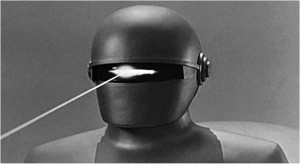BREAKING NEWS
LATEST POSTS
-
11 of the Weirdest Solutions to the Fermi Paradox
http://io9.gizmodo.com/11-of-the-weirdest-solutions-to-the-fermi-paradox-456850746
From the Nebula Award-nominated short story, “They’re Made Out of Meat” by Terry Bisson:
“They’re made out of meat.”
“Meat?”
“Meat. They’re made out of meat.”
“Meat?”
“There’s no doubt about it. We picked up several from different parts of the planet, took them aboard our recon vessels, and probed them all the way through. They’re completely meat.”
“That’s impossible. What about the radio signals? The messages to the stars?”
“They use the radio waves to talk, but the signals don’t come from them. The signals come from machines.”
“So who made the machines? That’s who we want to contact.”
“They made the machines. That’s what I’m trying to tell you. Meat made the machines.”
“That’s ridiculous. How can meat make a machine? You’re asking me to believe in sentient meat.”
“I’m not asking you, I’m telling you. These creatures are the only sentient race in that sector and they’re made out of meat.”
A little while later:
“They actually do talk, then. They use words, ideas, concepts?”
“Oh, yes. Except they do it with meat.”
“I thought you just told me they used radio.”
“They do, but what do you think is on the radio? Meat sounds. You know how when you slap or flap meat, it makes a noise? They talk by flapping their meat at each other. They can even sing by squirting air through their meat.”
“Omigod. Singing meat. This is altogether too much. So what do you advise?”
“Officially or unofficially?”
“Both.”
“Officially, we are required to contact, welcome and log in any and all sentient races or multibeings in this quadrant of the Universe, without prejudice, fear or favor. Unofficially, I advise that we erase the records and forget the whole thing.”
“I was hoping you would say that.”
“It seems harsh, but there is a limit. Do we really want to make contact with meat?”
“I agree one hundred percent. What’s there to say? ‘Hello, meat. How’s it going?’
FEATURED POSTS
-
Photography Basics : Spectral Sensitivity Estimation Without a Camera
https://color-lab-eilat.github.io/Spectral-sensitivity-estimation-web/
A number of problems in computer vision and related fields would be mitigated if camera spectral sensitivities were known. As consumer cameras are not designed for high-precision visual tasks, manufacturers do not disclose spectral sensitivities. Their estimation requires a costly optical setup, which triggered researchers to come up with numerous indirect methods that aim to lower cost and complexity by using color targets. However, the use of color targets gives rise to new complications that make the estimation more difficult, and consequently, there currently exists no simple, low-cost, robust go-to method for spectral sensitivity estimation that non-specialized research labs can adopt. Furthermore, even if not limited by hardware or cost, researchers frequently work with imagery from multiple cameras that they do not have in their possession.
To provide a practical solution to this problem, we propose a framework for spectral sensitivity estimation that not only does not require any hardware (including a color target), but also does not require physical access to the camera itself. Similar to other work, we formulate an optimization problem that minimizes a two-term objective function: a camera-specific term from a system of equations, and a universal term that bounds the solution space.
Different than other work, we utilize publicly available high-quality calibration data to construct both terms. We use the colorimetric mapping matrices provided by the Adobe DNG Converter to formulate the camera-specific system of equations, and constrain the solutions using an autoencoder trained on a database of ground-truth curves. On average, we achieve reconstruction errors as low as those that can arise due to manufacturing imperfections between two copies of the same camera. We provide predicted sensitivities for more than 1,000 cameras that the Adobe DNG Converter currently supports, and discuss which tasks can become trivial when camera responses are available.

-
Composition and The Expressive Nature Of Light
http://www.huffingtonpost.com/bill-danskin/post_12457_b_10777222.html
George Sand once said “ The artist vocation is to send light into the human heart.”





